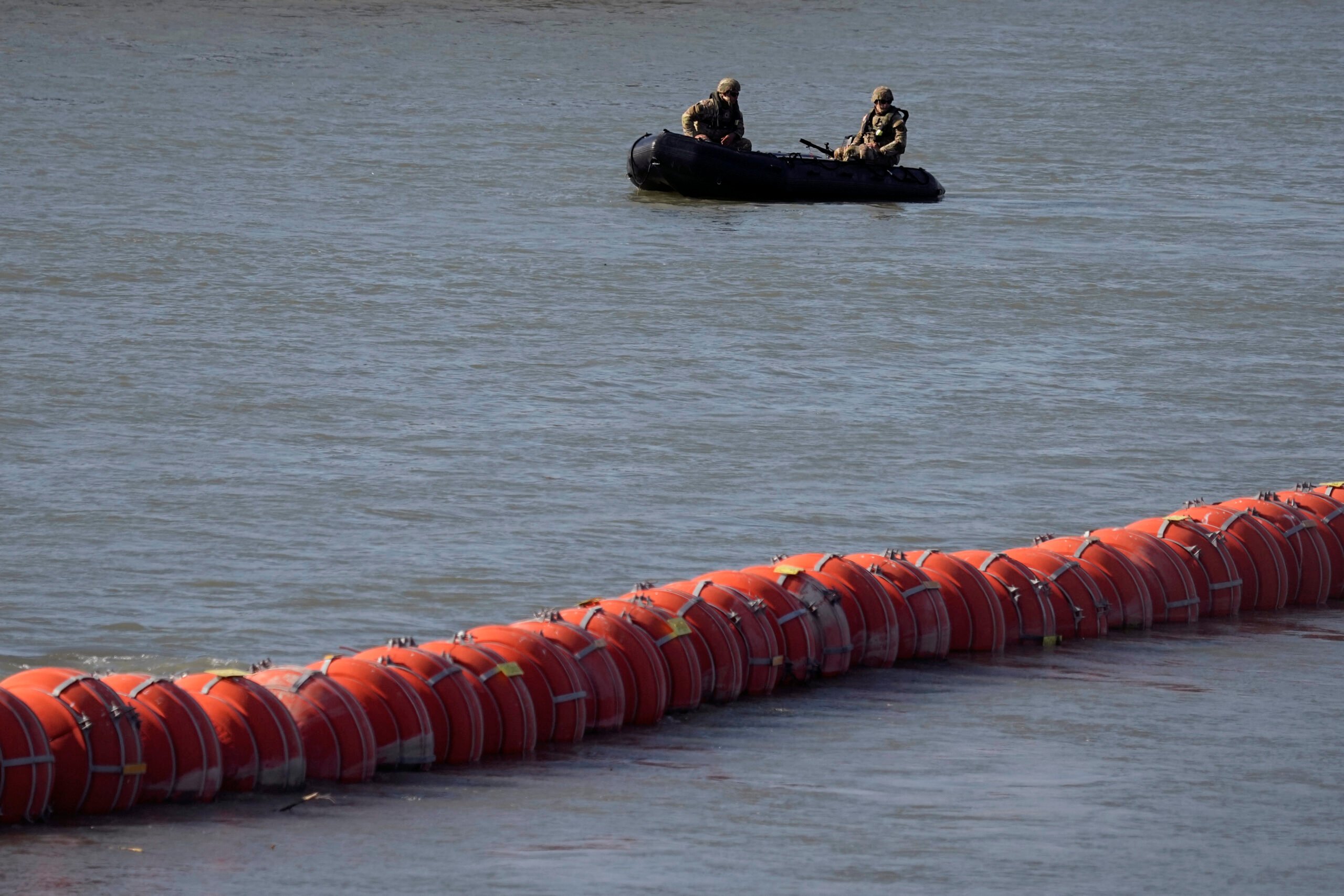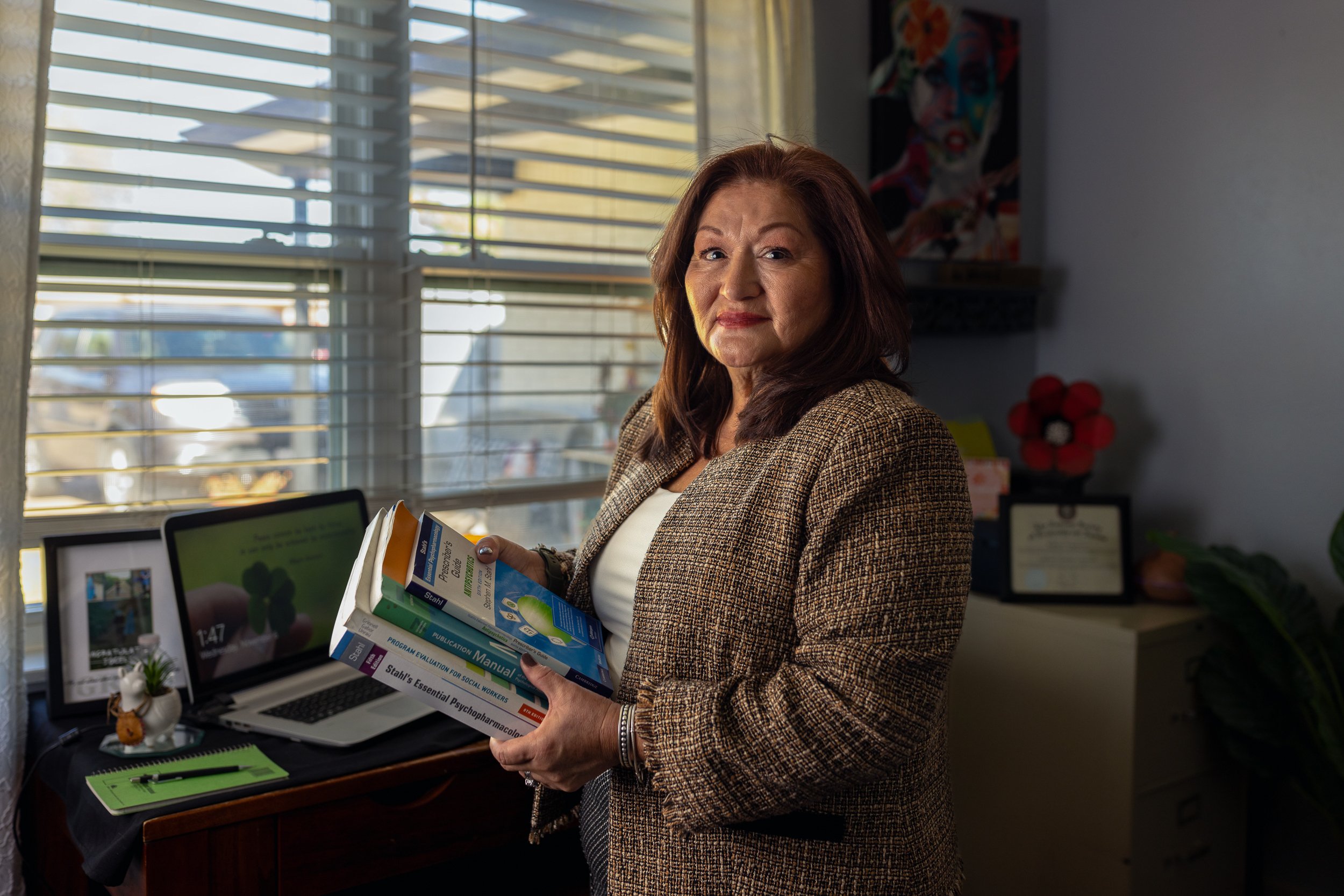Cash Flow
A tiny Texas town takes on T. Boone Pickens--and tries to save its water.

Hear Forrest Wilder’s interview with KUT’s Jennifer Stayton about this story.
George Arrington, 77, has made and lost and remade a small fortune in oil. But in his semi-retirement, it’s water that keeps him up at night. Arrington knows what to do with oil: Locate, extract, sell. If things go right, the checks roll in, and nobody complains. Water, he says, should be no different.
“It’s so darn similar to oil and gas, it’s unbelievable,” Arrington says. Trouble is, his friends and neighbors—many of whom make a nice living off of oil and gas production—don’t feel the same way.
It’s a sizzling August day, and we’re bouncing around in the independent oilman’s blessedly air-conditioned Suburban, navigating the caliche roads and two-track paths on his 7,000-acre cattle ranch in Hemphill County, a square of rolling hills, red bluffs, and cottonwood-lined streams in the windswept northeastern corner of the Panhandle—pretty country that can startle visitors who expect this part of the state to be flat, dry, and monotonous.
Arrington lives with his wife Jean in Canadian, the county’s only town, to be close to his modest Arrington Oil headquarters. He grew up on his ranch and knows it well. The property has been in his family for more than a century. His great-grandfather, a Texas Ranger, purchased the first parcel in 1890 as the region emerged from a haze of buffalo-slaughtering and Indian-killing.
From the truck, Arrington points out a grassy buffalo wallow, one of the subtle topographical depressions that served as hiding places for Army soldiers ambushed by Kiowa and Comanche during the nearby Buffalo Wallow Fight of 1874.
They don’t fight like that in Hemphill County anymore. But Arrington’s on the warpath against his neighbors, who he claims have confiscated 80 percent of the water beneath his land and robbed him of a million dollars. “I’m not in this for publicity,” Arrington says. “I’m not in this for any other reason than to protect my property rights.”
In contrast to the rest of the Panhandle, the people of Hemphill County have decided their water is more valuable in the ground than out. In parts of the Panhandle, widespread pumping has dramatically depleted the Ogallala Aquifer—a vast water reservoir underlying parts of eight states. Like the oceans, the Ogallala was once thought to have a limitless yield. Farmers imagined it to be a subterranean river that flowed freely across great distances. We now know better. Studies of the aquifer show that it barely recharges and moves slowly through beds of sand and gravel.
In some counties, two-thirds of the groundwater is already gone, used over the past six decades to irrigate corn, sorghum, and wheat. The Texas Water Development Board predicts that one-third of Texas’ portion of the Ogallala will be left in 2060.
In Hemphill County, where the rugged terrain makes irrigated farming difficult, water conservation has preserved Canadian’s reputation as the “Oasis of the Texas Panhandle.”
Around Canadian, the still-full aquifer feeds numerous seeps, springs, creeks, and the Washita and Canadian rivers, which in turn support wildlife, including threatened species like the lesser prairie chicken and Arkansas River shiner, defiant clusters of cottonwood and willow, and a small but growing–nature tourism industry that boosters in Canadian—a civically sophisticated and progressive community—are promoting as an alternative to declining oil production.
“The people in Hemphill County think differently,” says Wilbur Killebrew, a Canadian native who lives in neighboring Roberts County. “We want to preserve the land as long as we can and to have a supply of water for as long as we can.”
It’s a bold bid to keep their community from drying up and blowing away, the fate and destiny of many High Plains towns. It puts them in the crosshairs of powerful oil-baron-turned-water-marketer T. Boone Pickens, who plans to pump water to urban Texas. And it has landed Hemphill County in the middle of a heated debate over property rights—one that’s increasingly being fought all over the state as water supplies become constrained. “It’s a little place with big conflicts,” says Drew Miller, an Austin attorney who represents the Hemphill County Underground Water Conservation District.
Arrington has made common cause with Pickens. A few years ago, Mesa Water Inc., Pickens’ water company, bought half of Arrington’s water rights for $1 million. Mesa placed an option on the other half, but Arrington claims actions by the Hemphill County Underground Water Conservation District “renders the value of my water worthless.” What’s worse, he goes to church with four of the five board members, who he claims refuse to discuss the issue with him.
“Democracy is dead in Hemphill County,” he says as we rumble over a cattle guard.
The water district, one of 98 in the state, is run by a locally elected board that regulates groundwater in Hemphill County. Last year, the board voted to keep 80 percent of the Ogallala beneath the county intact over the next 50 years. Arrington’s ranch is just a few miles from Roberts County, where the goal is to drain half of the aquifer by 2060. Roberts County—home to the vast majority of Pickens’ water holdings—is ground zero for Panhandle water mining. Arrington worries that the free-for-all across the county line will dewater his property.
“In other words, they’re saying you’re going to get your ass drained,” Arrington says, his usually amicable face turning sour. “There’s no way to protect yourself.”
Arrington would prefer to drain his property himself, even if it means ruining the thing that he loves the most. Like a lot of landowners in Hemphill, Arrington is proud of his and his son Mike’s efforts to preserve the land and surface water. They even make some money off of it: The Arrington homestead, a two-story, prefabricated house hauled in pieces to its present location by train and wagon in 1919, serves as a bed-and-breakfast for nature enthusiasts.
The oilman gives a looping tour of the ranch’s numerous water features: the trickling Washita River; the small cattle-watering holes fed by springs; the green-tinged fields naturally irrigated by a shallow water table; the stands of giant cottonwood and willow; and the deep creek behind Mike Arrington’s house. (Mike, George’s son, runs the ranch.)
“Nobody loves springs in Hemphill County more than George Arrington,” George Arrington declares. He and Mike, he says, have gone to considerable effort uncovering springs, clearing invasive Russian olive trees and implementing eco-friendly rangeland managment techniques. “We love water. We like water. And we want water to be here forever. In other words, we’re interested in conservation. But wise conservation is when everyone is treated the same. When you start discriminating against people, it’s not conservation; it’s confiscation.”
Arrington believes in the Rule of Capture, the fundamental groundwater law in Texas that says you can pump as much as you like, even if your neighbor’s well runs dry. “If we didn’t sell our water rights, we would just sit there and rub our big fat bellies and get drained,” he says. One day, Arrington says, his neighbors are going to “wake up and realize, hey these sons of bitches are draining all our water.” Then, he says, it will be too late.
In 2005, belatedly recognizing the state’s need for long-term water planning, the Texas Legislature created a complex groundwater planning process. The Legislature carved the state up into 16 groundwater management areas, based roughly on the boundaries of major aquifers, and ordered Texas’ 98 groundwater conservation districts—locally-controlled regulatory boards—to work on how they want their shared aquifers to look in 50 years. The process of setting so-called “desired future conditions” is clunky and complicated, but has the virtue of forcing communities to consider the future.
In the Panhandle, as in the rest of the state, the result has been a patchwork of goals for how much water remains. Groundwater Management Area 1, the northern half of the Ogallala, decided to split its aquifer into three portions and set a target for each area. In the far northwestern corner, where irrigators dominate, the groundwater planners expect to have only 40 percent of the water left in 60 years. In 13 other counties, where irrigated farming is also widespread, the goal is to drain 50 percent of the aquifer in 50 years.
These districts have long operated under the principle of “managed depletion.” Managed depletion takes as a given that the aquifer will wither away, but eases the economic and social pain of a dying agricultural economy by gradually decreasing pumping. It’s a slower way to get to zero. The idea can also be understood in biblical terms: A day of reckoning is coming, but it can be postponed for a while.
Hemphill County, on the other hand, has never had much pumping and isn’t interested in water ranching. The Hemphill County groundwater district set a benchmark of 80 percent left in 50 years. The stringent rule has kept the barbarians from crashing the gate. It has made the area off-limits for water marketers like Pickens or wholesale water suppliers like the Canadian River Municipal Water Authority, the No. 1 owner of groundwater rights in the state.
That doesn’t sit well with Boone Pickens and Mesa Water. Mesa Water, Arrington, and private property legal activists like the Pacific Legal Foundation are attacking the edifice of regulation in Texas. They contend that groundwater is a vested, private property right and is owned by the landowner “in place” beneath the ground—like oil and gas. From this radical legal theory flows the notion that pumping limits imposed on landowners could constitute a “taking” of property without compensation. “Now because of this rule, all the buyers have disappeared,” says Arrington. “It’s like the water dried up, if you like. No market.”
In April, Mesa and Arrington filed suit against the Texas Water Development Board, claiming that Hemphill County can’t set a different desired future condition than the other groundwater districts over the Ogallala Aquifer.
Mark Meek, a county commissioner, disputes the idea that regulating groundwater based on principles of sustainability interferes with private property rights. “If this natural resource leaves, the only ones that are going to benefit are those who sold their water,” says Meek. “As far as the rest of the community, it’s going to be detrimental.”
By law, the district can’t directly prevent Mesa or Arrington or anyone else from exporting water if an end-user is found. But pumping limits prevents the company from maximizing production.
Mesa is “breathing down the necks of this water district, which is the most conservation-oriented in the Texas Panhandle,” says Laurie Ezzell Brown, editor of the Canadian Record and a frequent Mesa critic. “They’ve challenged everything we’ve done. They threaten lawsuits at every turn.”
The conflict has broader resonance in a state coming to terms with the limits of its water supplies. “It seems the entire state has one of two problems, and both lead to litigation: Either there’s too much water, or there’s not enough,” says Greg Ellis, executive director of the Texas Association of Groundwater Districts. “Those areas that have too little water are going to be fighting over available supplies and fighting to go find alternative supplies somewhere else. Those areas that have too much water, you’re going to see people fighting over who gets to get rich over supplying water to those areas that don’t have enough.”
Pickens figured out the “get-rich” part a decade ago. At least he thought he did.
Pickens didn’t invent water mining in the Ogallala; he just made it big business. In the 1980s, the Southwestern Public Services Co., a regional power company, purchased 100,000 acres of groundwater rights in Roberts County, the county west of Hemphill. The utility wasn’t engaging in water marketing, though; it needed the supply for a proposed nuclear power plant.
The project never got off the ground, and the utility needed to unload its investment. In 1997, the Canadian River Municipal Water Authority, which provides drinking water to Amarillo and Lubbock and nine smaller cities, bought 43,000 acres from Southwestern Public Services for $14.5 million.
A few years later, Salem Abraham, a prominent Hemphill County businessman and philanthropist, was making his own play. Abraham pooled his water rights with other Roberts County landowners into a 72,000-acre package, which they sold to Amarillo in 1999 for $20 million.
Pickens watched this with a mixture of unease and interest. The Canadian River authority wells were close enough to his 68,000-acre ranch that pumping would partially drain his property. The choice was clear: Pump or be pumped.
In a sense, Pickens was following the Rule of Capture to its logical conclusion: To defend your property, you must pump first and faster.
In 1999, Pickens formed Mesa Water and began buying water rights from neighbors in Roberts and surrounding counties. His first purchase was the remaining 65,000 acres held by Southwestern Public Service. Mesa’s entrance set off a bidding war between the river authority and Mesa. Today most of the water in Roberts County is spoken for. Mesa has amassed enough water rights to supply about 200,000 acre-feet, or 65 billion gallons, of water each year to urban Texas.
Pickens’ business proposition has never been that hard to understand: Buy water and wait until some booming city (Dallas, San Antonio) is thirsty and desperate enough to pay the asking price. Estimated revenues over 30 years: $1 billion. “There are people who will buy the water when they need it,” he told Business Week in 2008. “And the people who have the water want to sell it. That’s the blood, guts and feathers of the thing.”
Mesa never quite cracked Hemphill County. “We set here in Hemphill County and seen how it works,” said Mark Meek, a county commissioner. “We like what we have—we like the creeks, we like the springs, we like the big cottonwood trees, the scenery and the fall foliage. And you know, there’s not many places left like that. We just could not understand how large water exports fit this picture.”
Marty Jones, an Amarillo attorney who represents Mesa Water and Arrington, concedes that the Mesa pipeline-to-Dallas idea has never been popular in the area. But he bristles at the notion that Pickens is stealing the Panhandle’s water. “It’s private property,” says Jones. “If the Panhandle wishes to keep it here, there’s a simple solution, and that’s to have [the Canadian River Municipal Water Authority], who’s already set up to do this, purchase it. Or the city of Amarillo purchase it. They’re big enough. It wouldn’t make a dime’s worth of difference in a water bill. There’s a very simple solution—they simply purchase it. But they don’t take it.”
Someday they might. Mesa Water and the Canadian River authority have been in on-again, off-again negotiations for a year. The wholesale water supplier already has what Mesa desires: a pipeline and a market. The authority owns a 358-mile aqueduct that runs south from Roberts County to Amarillo and then to Lubbock, Tahoka, and Lamesa.
“I hope someday we end up with [Mesa’s water],” says Kent Satterwhite, general manager of the Canadian River authority. “That would nearly double our supply.”
For the time being, Mesa says i
still prefers to sell to a big city downstate. Does Dallas or El Paso or San Antonio need Pickens’ water? No buyer has come forward yet, and the costs of building a pipeline are exorbitant. Amy Hardberger, an attorney and water specialist with the Environmental Defense Fund of Texas, thinks construction costs and the energy involved with moving water could sink the project. “I think it’s somewhat overly simplistic to say if a city needs water badly enough, they will buy it,” she says. “Something has to get it there.” Satterwhite agrees.
“There’s just so many more feasible options for the cities they’re talking about,” he says. “It doesn’t seem to make any sense whatsoever.”
Dallas-Fort Worth could find cheaper, more accessible water in East Texas or Oklahoma. The Metroplex cities could tap existing reservoirs, or try the cheapest option: water conservation. San Antonio, over 500 miles from Roberts County, is exploring the costs of desalinating seawater from the Gulf of Mexico.
Besides, Satterwhite argues, Mesa isn’t offering a renewable supply. “It would only be a 20- or 30-year supply, and then it’s over,” he says. “They’d drain this area completely.”
Regardless of whether Mesa’s water ends up in Amarillo or Dallas, the result will be the same: The Panhandle will become that much drier.
The day after visiting with Arrington, I meet up with Jim Bill Anderson at his 5,280-acre spread on the Canadian River, a working cattle ranch that’s won accolades for preserving native prairie grasses and wildlife.
In many respects, Anderson and Arrington are cut from the same cloth: They’re Canadian natives, large landowners, politically conservative, protective of private property. They attend the same church. But Anderson takes a different view of groundwater. He dresses like a cowboy—blue jeans, white Stetson, and boots—but the 59-year-old is fluent in the science of the aquifer, the complexities of groundwater regulation, and the subtleties of Hemphill County’s ecology. A member of the Hemphill County Underground Water Conservation District, Anderson confesses to being a reluctant regulator.
“When I was growing up, no one would ever have thought we’d be regulating water, but the pressures of population, that’s where it’s coming from,” Anderson says as we cruise his ranch in a bulky feeder truck. “It’s hard for me as a regulator because I want to be left alone more than anyone. But it’s not the Wild West anymore. I wish it was.”
Where Arrington sees profit in mining the aquifer, Anderson sees a percentage in leaving it underground. “I’m not happy that George is stressed out over it,” he says. “But the local people and the board don’t want the springs and streams dewatered, and they sure don’t want it exported to Dallas.
“There’s no do-over, there’s no whoops,” says Anderson, “unless they pump water back from Dallas and put it back in the aquifer.”
The fundamental question in the Panhandle is, when? When does the water run out? It is a fact of nature that it will. People only get to choose when. “At the bottom of this hill we’re going down, there is a brick wall,” says Anderson. “When it’s gone, it’s gone. People say it might be 20 years from now. Well, good Lord, my grandson is only 4 years old.”
Near the end of the tour, Anderson drives to the edge of a bluff overlooking the Canadian River. It’s a beautiful view of a lush river valley. Wide red sandbars hug the edges of the stream as it executes a lazy turn. Meadows of native prairie grass, dotted here and there with trees, roll down to the water’s edge.
The Spanish explorers who trekked the area hundreds of years ago would have found a scene much like this one. Whether it survives for another few hundred is an open question.


